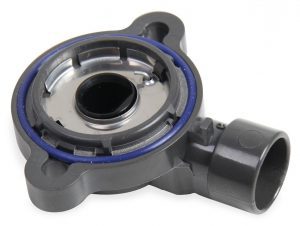How To Reset Throttle Position Sensor
The best way to reset your throttle position sensor (TPS) is to unhook the negative cable from your battery for up to five minutes or to remove the fuse for your engine control module.
A throttle position sensor (TPS) is a crucial component of your vehicle’s engine management system. The sensor monitors the position of your vehicle’s throttle plate, which controls airflow into the engine. The TPS sends this information to the engine control module (ECM), which uses it to adjust the engine’s fuel injection and ignition timing. This ensures that your engine runs smoothly and efficiently.
The TPS is typically located on the throttle body and consists of a housing, a sensor, and an electronic circuit board. The sensor measures the position of the throttle plate and sends an electronic signal to the ECM. The ECM then adjusts the fuel injection and ignition timing based on this signal. If the TPS fails, it can cause a variety of issues, such as poor acceleration, stalling, and rough idling.
If your vehicle is having engine issues or is experiencing acceleration and idling issues,it’s a good idea to check your throttle position sensor. It may need repair, replacement or reprogramming.
What Is A Throttle Position Sensor?
A throttle position sensor (TPS) is a crucial component of your vehicle’s engine management system. This sensor monitors the position of your vehicle’s throttle plate, which controls the airflow into the engine. The TPS sends this information to the engine control module (ECM), which uses it to adjust the engine’s fuel injection and ignition timing. This ensures that your engine runs smoothly and efficiently.
The TPS is typically located on the throttle body and consists of a housing, a sensor, and an electronic circuit board. The sensor measures the position of the throttle plate and sends an electronic signal to the ECM. The ECM then adjusts the fuel injection and ignition timing based on this signal. If the TPS fails, it can cause a variety of issues, such as poor acceleration, stalling, and rough idling.
To troubleshoot a bad TPS, it’s important to look for symptoms such as sudden changes in engine speed, engine stalling or hesitation, unresponsive throttle, or inaccurate readings on your vehicle’s dashboard. If you suspect a problem with your TPS, it may be necessary to replace or repair it.
Reprogramming or resetting your sensor can sometimes solve issues, but repairing faulty or loose wiring may also be necessary.
Where Is The Throttle Position Sensor (TPI) Located?
If you’re experiencing issues with your car’s throttle response, it’s possible that your throttle position sensor (TPS) is faulty and needs replacement. But where exactly is the TPS located in your vehicle? Typically, the TPS is located on the throttle body assembly. The throttle body is located at the entrance of the air intake system and regulates airflow to the engine. The TPS is usually mounted on the side of the throttle body and is connected to the throttle plate shaft.
- To help locate the TPS, consult your vehicle’s service manual for an engine diagram or search online.
- In some cases, a TPS may be visible and accessible without having to remove upper engine parts. However, in other cases, you may need to remove the air intake assembly or other components to access the TPS.
- The exact location of the TPS may vary depending on the make and model of your vehicle. It’s a good idea to check your vehicle’s service manual or search online for an engine schematic to locate the TPS.
- When in doubt, consult a mechanic who works on your make and model car.
The TPS is an essential component of your vehicle’s throttle system and can greatly affect its performance. If you suspect your TPS is faulty, have it checked, repaired, reset or replaced right away. A faulty TPS can cause stalling, rough idle, poor fuel economy or acceleration issues.
Symptoms Of A Failed Throttle Position Sensor
A failed throttle position sensor (TPS) can cause a range of engine issues, and it’s important to recognize the symptoms to avoid further damage. Here are some of the most common symptoms to watch out for:
- Check engine light: This is a vague symptom that could point to a variety of issues, but it’s often an indication of a problem with the TPS. If you see the check engine light illuminated, it’s worth investigating further.
- Acceleration issues: Unusual changes in your acceleration could be linked to a faulty TPS. Look out for hesitations during acceleration, poor power, difficulty or delay in gear shifting, and unusual surges while accelerating. These symptoms could indicate that the TPS isn’t working correctly.
- Poor fuel economy: If you notice that your fuel economy has dropped dramatically, it could be a result of an improper fuel and air mixture caused by a faulty TPS.
- Idle issues: Stalling, surging, or hesitating while idling could be a result of a damaged TPS. If your engine struggles to idle efficiently, it’s worth investigating the TPS as a possible cause.
The best way to determine if these issues are caused by your TPS is to take a few steps:
- Use a multimeter to determine if the sensor has an electrical connection issue.
- Check the engine control module for the trouble code that resulted in your illuminated check engine light to see if it is linked with your TPS.
- Based on your findings, you may need to repair, replace, or reprogram your TPS.
By recognizing these symptoms early and taking the necessary steps to diagnose and repair the issue, you can avoid further damage to your engine and ensure that your vehicle is running smoothly.
Tools Needed To Fix A Bad TPS
To reset your throttle position sensor, you will need the following tools:
- Socket wrench set: You’ll need a socket set to remove any bolts that are holding the TPS in place. Make sure to choose the correct size socket to avoid stripping the bolt head.
- Screwdriver: You’ll need a screwdriver to disconnect any wiring harnesses that are connected to the TPS. A flat-head or Philips head screwdriver are typically the most useful for this.
- Cleaner: You’ll need a throttle body cleaner or electrical contact cleaner to clean the TPS and surrounding area before reinstalling it.
- Rags: Have some clean rags on hand to wipe away any excess cleaner and to clean up any spills.
- Multimeter: A multimeter is useful for checking the voltage output of the TPS after it’s been reset. This tool is optional, but it can help ensure that the TPS is functioning properly.
Having these tools on hand will make the process of resetting your throttle position sensor much easier and less frustrating. It’s important to have the right tools to avoid damaging the TPS or surrounding components while working on your engine.
Steps To Reset A Throttle Position Sensor
Follow these steps to reset your throttle position sensor:
- Disconnect the battery: Start by disconnecting the negative terminal of your car battery to avoid any electrical shock or short circuit during the process.
- Locate the TPS: The TPS is usually located on the throttle body of the engine. Check your car’s manual or search online for the specific location of the TPS for your make and model vehicle.
- Disconnect wiring harness: Use a screwdriver to disconnect the wiring harness from the TPS. Be careful not to damage the wiring or connectors.
- Remove the TPS: Use a socket wrench set to remove any bolts holding the TPS in place. Gently remove the TPS from the throttle body.
- Clean the TPS and surrounding area: Use a cleaner and rags to clean the TPS and surrounding area thoroughly. This will ensure that the TPS operates smoothly.
- Wait for 10-15 minutes: Allow the TPS to reset by waiting for about 10-15 minutes before reinstalling it.
- Reinstall the TPS: Gently reinstall the TPS back into the throttle body and secure it with bolts.
- Reconnect the wiring harness: Reconnect the wiring harness to the TPS with a screwdriver.
- Reconnect the battery: Reconnect the negative terminal of your car battery and start your car to see if the TPS has been reset successfully.
- Check voltage output: This step is optional but recommended. Use a multimeter to check the voltage output of the TPS to ensure that it’s functioning properly.
Following these steps carefully will help you reset your throttle position sensor and avoid any potential issues with your car’s performance. Remember to be gentle and patient throughout the process to avoid damaging sensitive engine components and wiring.
Tips & Tricks
Here are some helpful tips and tricks to help you reset your throttle position sensor:
- Be gentle: The TPS is a delicate component. Be gentle when removing and reinstalling it to avoid damaging it or the surrounding components.
- Take pictures: Before starting, take pictures of the TPS and surrounding area. This always helps me remember how everything was positioned and connected before working on the engine.
- Clean thoroughly: Make sure to clean the TPS and surrounding area thoroughly with a cleaner and rags before reinstalling it. This helps prevent dirt or debris from affecting the TPS operation.
- Wait for 10-15 minutes: Wait 10-15 minutes before reinstalling the TPS to allow it to completely reset.
- Use a multimeter: Use a multimeter to check the voltage output of the TPS after resetting it. This helps ensure the TPS is functioning properly.
- Avoid over-tightening: When reinstalling the TPS, avoid over-tightening the bolts. This can damage the TPS or surrounding components and affect its operation.
- Check for error codes: After resetting the TPS, use an OBD-II scanner to check for error codes. This will help you identify other issues that may be affecting your car’s performance.
By following these tips and tricks, you can ensure that your throttle position sensor is reset properly and functioning correctly. Remember to take your time and be gentle with sensitive wiring and engine components.
Troubleshooting Your Throttle Position Sensor
If you’re experiencing acceleration and idling issues with your vehicle, the throttle body system could be to blame. One common culprit is a faulty throttle position sensor.When your TPS starts to go bad, it can cause rough idle, stalling, bucking, poor fuel economy and acceleration issues. And when the TPS breaks, your car will become undrivable and won;t even start.
Here are some steps to take when trying to diagnose and repair a bad throttle position sensor.
Symptoms Of A Bad Throttle Position Sensor
Before you start thinking about a solution, it’s important to identify the symptoms of a bad throttle position sensor. These can include:
- Sudden changes in engine speed
- Engine stalling or hesitation
- Unresponsive throttle
- Poor fuel economy
- Bucking for no reason
- Poor acceleration
If you’re experiencing any of these issues, it’s time to take a closer look at your throttle position sensor.
Solutions For A Bad Throttle Position Sensor
Completely replacing your sensor may be the best way to avoid future issues, but some issues can be easily fixed by reprogramming or repairing your sensor.
Reprogramming Or Resetting Your Sensor
Reprogramming or resetting your throttle position sensor (TPS) can sometimes solve these issues. This step is also typically needed after you install a new sensor. The easiest way to reset your throttle position sensor is to unhook the negative cable from your battery for up to five minutes or to remove the fuse for your engine control module. However, if you’re uncomfortable working with electricity, don’t attempt this on your own, as removing the wrong fuse or cable from your battery could be dangerous.
Resetting is sometimes all that’s needed to restore your sensor. Code errors can cause your throttle position sensor to work erratically or incorrectly. Otherwise, you’ll need professional software to reprogram your sensor. This job is best done by a professional mechanic.
Repairing Faulty Or Loose Wiring
If your throttle position sensor (TPS) just needs repairs, it could be the result of faulty or loose wiring. Just like any other electrical wiring, your throttle position sensor is susceptible to corrosion and faulty connections. Once you’ve established the issue is with your sensor and that it isn’t a programming fault, check the wiring and connection points before purchasing a new one.
Replacing Your Sensor
Finally, sometimes your sensor is irreparably damaged. A broken sensor needs to be replaced in order to restore full functionality to your vehicle.
Here’s a brief overview of how to change a TPS:
- Unhook the battery
- Remove any engine components that are covering the sensor
- Unhook any wiring connected to the sensor
- Unbolt the sensor
- Clean the area with an engine cleaner and rag
- Bolt on the new sensor
- Reconnect wiring connected to the sensor
- Reinstall all the engine compnenets you previously removed to expose the sensor
- Reset the sensor if required by the manufacturer
- Start the car
- This step is options, but I recommend testing the sensor with a multimeter
By following these steps, you can replace your throttle position sensor in about 30 minutes to an hour.However, the exact amount it takes depends on how many parts are in the way and how easy it is to access the sensor. With some engines it can be tough to get to.
Remember to take necessary safety precautions when working with electrical components. And consider consulting a professional mechanic for more complex repairs or reprogramming needs.
What Happens When The Throttle Position Sensor Goes Bad?
When the throttle position sensor (TPS) goes bad, it can cause a variety of problems with your vehicle’s performance.
Here are some of the most common issues that can occur:
- Poor acceleration and throttle response: A faulty TPS can cause your engine to respond poorly when you press down on the gas pedal. You may notice that your car hesitates or stalls when you try to accelerate. It may also take longer than usual to accelerate.
- Unstable idle: A bad TPS can also cause your engine to idle erratically, either too high or too low. Your car may shake or vibrate while idling, or the engine could rev up and down on its own.
- Poor fuel economy: When the TPS is malfunctioning, it can cause your car to burn more fuel than usual. This is because the engine may be running inefficiently, either by consuming too much fuel or not enough air.
- Check engine light: If your car’s onboard diagnostic system detects a problem with the TPS, it may trigger the check engine light to come on. This can indicate a range of issues with your vehicle. These include problems with the TPS, the wiring, or other related components.
If you experience any of these symptoms, it’s important to have your TPS checked and replaced if necessary. A faulty TPS can not only affect your car’s performance but also be dangerous in certain situations.
The TPS is a critical component of your car’s throttle system. A malfunctioning TPS can cause a range of issues with your vehicle’s performance. If you suspect that your TPS is bad, it’s best to have it diagnosed and fixed as soon as possible to avoid further damage and ensure your safety on the road.
What Causes Throttle Position Sensor Failure?
Throttle position sensor (TPS) failure can be caused by a variety of factors, including:
- Wear and tear: Like any other mechanical component, the TPS can wear out over time due to normal usage. As the TPS ages, its internal components can become damaged or worn which can cause it to malfunction.
- Contamination: The TPS is exposed to a range of environmental factors, including dirt, dust, and moisture. Over time, these contaminants can build up inside the TPS and interfere with its operation.
- Electrical issues: The TPS is connected to the vehicle’s electrical system. Issues with the wiring or connectors can eventually cause it to fail. For example, a loose or corroded connection can cause a poor signal or no signal at all, which can cause the TPS to malfunction.
- Overheating: The TPS is located near the engine and can be exposed to high temperatures. If the engine overheats or runs too hot, it can cause the TPS to fail or malfunction.
- Manufacturing defects: In some cases, TPS failure may be caused by a manufacturing defect. This can include issues with the materials used or problems with the sensor’s internal components.
Not all TPS failures are caused by a single factor. In many cases, TPS failure is the result of a combination of factors, including normal wear and tear, environmental factors, and electrical issues.
There are several potential causes of throttle position sensor failure, including wear and tear, contamination, electrical issues, overheating, and manufacturing defects. If you think your TPS is failing, have it diagnosed and repaired, reset or replaced as soon as possible to avoid further damage to the car.
Symptoms Of A Bad Throttle Position Sensor
The throttle position sensor (TPS) is a critical component of your vehicle’s throttle system. When your TPS starts to fail, it can cause a range of symptoms that can affect your car’s performance and safety.
Here are some common symptoms of a bad TPS:
- Poor acceleration: A faulty TPS can cause your car to respond poorly when you press down on the gas pedal. Your car may hesitate or stall when you try to accelerate, or it may take longer than usual to accelerate.
- Rough idle: A bad TPS can also cause your engine to idle erratically, either too high or too low. Your car may shake or vibrate while idling, or the engine could rev up and down on its own.
- Surging or bucking: In some cases, a failing TPS can cause your car to surge or buck while driving at a steady speed.
- Stalling or dying: If the TPS fails completely, your car may stall or die while driving. This can be a serious safety issue, especially if you’re on a busy road or highway.
- Poor fuel economy: When your TPS is malfunctioning, it can cause your car to burn more fuel than usual. This is because the engine may be running inefficiently, either by consuming too much fuel or not enough air.
- Check engine light: If your car’s onboard diagnostic system detects a problem with the TPS, it may trigger the check engine light to come on. This can indicate a range of issues with your vehicle. These may include problems with the TPS, the wiring, or other related components.
If you experience any of these symptoms, it’s important to have your TPS checked and replaced if necessary. A faulty TPS can not only affect your car’s performance but may also be dangerous in certain situations.
Do You Have To Reset A Throttle Position Sensor?
Yes, you should almost always reset the throttle position sensor (TPS) after replacing it. This is because the TPS is calibrated to the specific engine and vehicle it is installed in, and a new TPS may need to be properly calibrated in order to function correctly.
To reset the TPS, you will need to perform a procedure called an “idle relearn” or “throttle body relearn.” This involves turning the key to the “on” position without starting the engine, waiting for a few seconds, then turning the key off and repeating the process several times. This allows the engine control module (ECM) to relearn the correct idle position and adjust the throttle body as necessary.
- The exact procedure for resetting the TPS can vary depending on the make and model of your vehicle. Consult your vehicle’s owner’s manual or a professional mechanic for specific instructions.
- Not all TPS replacements require a reset. In some cases, the new TPS may be pre-calibrated and ready to use right out of the box. However, it’s always a good idea to consult with a professional mechanic to ensure that your TPS is installed and calibrated correctly. Any required resets or relearns should be performed to ensure proper operation.
Resetting the throttle position sensor may be necessary after replacing it, depending on the make and model of your vehicle. Performing an idle relearn or throttle body relearn can help ensure that your TPS is properly calibrated and functioning correctly.
How Long Does It Take For A TPS Sensor To Reset?
Resetting the throttle position sensor (TPS) can take anywhere from a few minutes to several hours, depending on the specific make and model of your vehicle and the method used for resetting the sensor. In some cases, simply disconnecting the battery for a few minutes can reset the TPS and allow it to recalibrate. However, this method may not work for all vehicles, and it can also reset other systems and settings in your car, such as the radio presets and clock.
Other methods for resetting the TPS may involve using a diagnostic tool or performing an idle relearn or throttle body relearn procedure. These methods can take longer and may require the help of a professional mechanic.
- Generally, an idle relearn or throttle body relearn procedure can take anywhere from 30 minutes to several hours, depending on the specific make and model of your vehicle and the complexity of the reset procedure.
- Simply resetting the TPS may not always solve the underlying problem. If the TPS is malfunctioning or damaged, it may need to be replaced in order to restore proper function to your vehicle’s throttle system.
The length of time it takes to reset a throttle position sensor can vary depending on the make and model of your vehicle and the method used for resetting the sensor. Simple battery disconnection methods can take a few minutes, while more complex idle relearn or throttle body relearn procedures can take several hours.
It’s important to diagnose and address any underlying issues with the TPS to ensure proper function of your vehicle’s throttle system.
What Happens If The TPS Is Not Calibrated?
The TPS, or Throttle Position Sensor, is a very important part of your car’s engine system. If your TPS isn’t calibrated properly, it can lead to some serious problems. When you press down on the gas pedal, the TPS sends a signal to the engine control unit (ECU) which tells it how much fuel to inject into the engine. If the TPS is not calibrated correctly, the signal it sends can be incorrect.
This means that your engine might not be getting enough fuel, or it might be getting too much. Either way, it can cause some serious damage to your engine over time.
If a TPS is not calibrated correctly, you could experience the following common issues:
- Poor acceleration: If your TPS is not calibrated properly, your engine may not be getting enough fuel to accelerate properly. This can result in sluggish acceleration and poor performance.
- Stalling: If your TPS is not calibrated correctly, your engine may stall when you come to a stop. This can be dangerous if you’re driving at high speeds, as it can cause a loss of control.
- High fuel consumption: If your TPS is not calibrated properly, your engine may be getting too much fuel. This can result in high fuel consumption, which means you’ll be spending more money at the gas station than you need to.
It’s very important to make sure that your TPS is calibrated properly. If you notice any of the symptoms I mentioned above, it’s a good idea to have your car inspected by a mechanic to make sure everything is working as it should be. Don’t take any chances with your safety or your car’s performance.
How Long Can You Drive With A Bad Throttle Position Sensor?
A bad Throttle Position Sensor (TPS) can cause some serious issues with your car’s performance. It’s important to address the problem as soon as you start noticing symptoms of a bad TPS. This may include poor or rough idle, acceleration problems, stalling or poor fuel economy. How long you can drive with a bad TPS depends on the Severity of the Problem
If your TPS is only slightly malfunctioning, you might be able to drive for a short distance without any major issues. However, if the problem is more serious, it’s best to avoid driving altogether.
Here are some symptoms you might experience if your TPS is bad:
- Your car may have trouble accelerating.
- The car may stall or have trouble starting.
- You may notice your engine idling roughly.
- Your car may have trouble shifting gears or may shift gears roughly.
- You may notice a decrease in fuel efficiency, meaning you’ll need to fill up more often.
- The car may buck for no reason.
If you notice any of these symptoms, it’s best to inspect, reset, repair or replace the TPS. Get your car to a mechanic as soon as possible to avoid further damage.
Driving with a bad TPS is not recommended. It’s best to get the problem addressed by a mechanic or fix it it DIY as soon as possible to avoid any potential safety hazards or further damage to your vehicle. Remember, always prioritize your safety and the safety of those around you when it comes to driving.
Summary: How To Reset Throttle Position Sensor
The best way to reset your throttle position sensor (TPS) is to unhook the negative cable from your battery for up to five minutes or to remove the fuse for your engine control module.
A throttle position sensor (TPS) is a crucial component of your vehicle’s engine management system. The sensor monitors the position of your vehicle’s throttle plate, which controls airflow into the engine. The TPS sends this information to the engine control module (ECM), which uses it to adjust the engine’s fuel injection and ignition timing. This ensures that your engine runs smoothly and efficiently.
The TPS is typically located on the throttle body and consists of a housing, a sensor, and an electronic circuit board. The sensor measures the position of the throttle plate and sends an electronic signal to the ECM. The ECM then adjusts the fuel injection and ignition timing based on this signal. If the TPS fails, it can cause a variety of issues, such as poor acceleration, stalling, and rough idling.
If your vehicle is having engine issues or is experiencing acceleration and idling issues,it’s a good idea to check your throttle position sensor. It may need repair, replacement or reprogramming.
If you have any questions or comments about how to reset a throttle position sensor, email any time.























